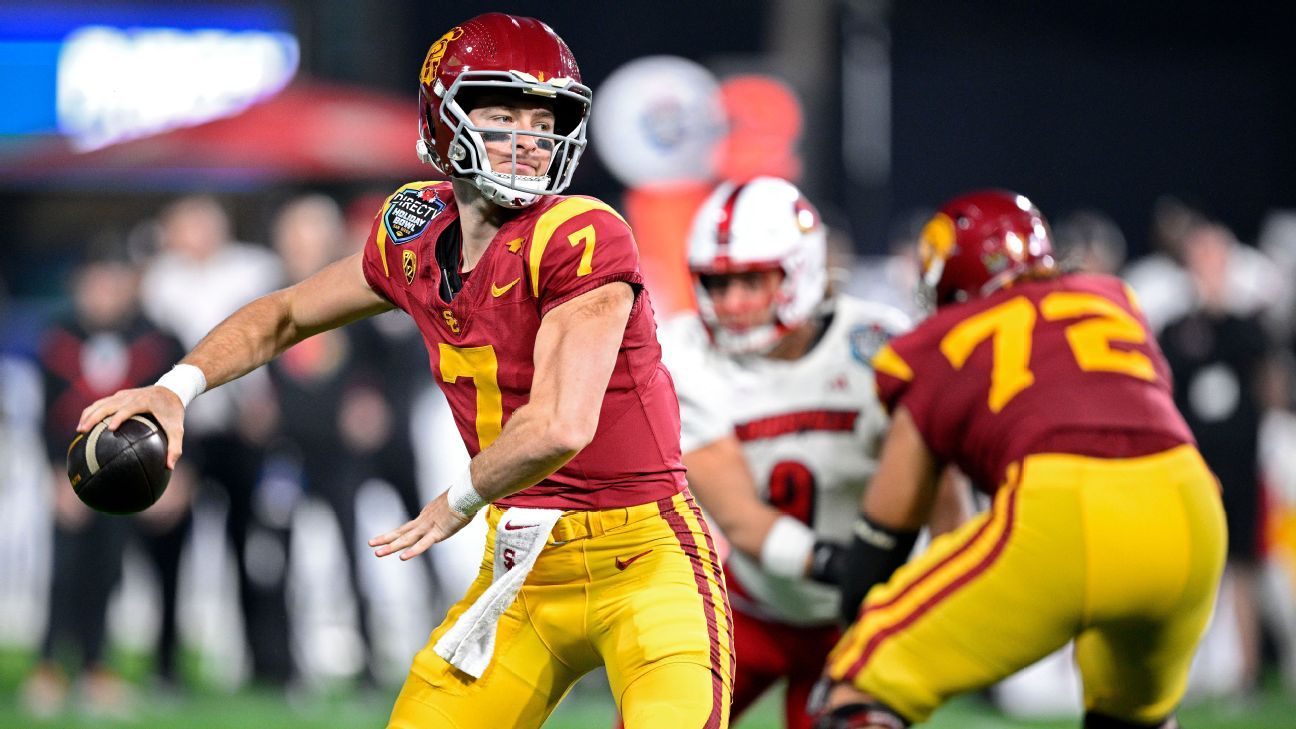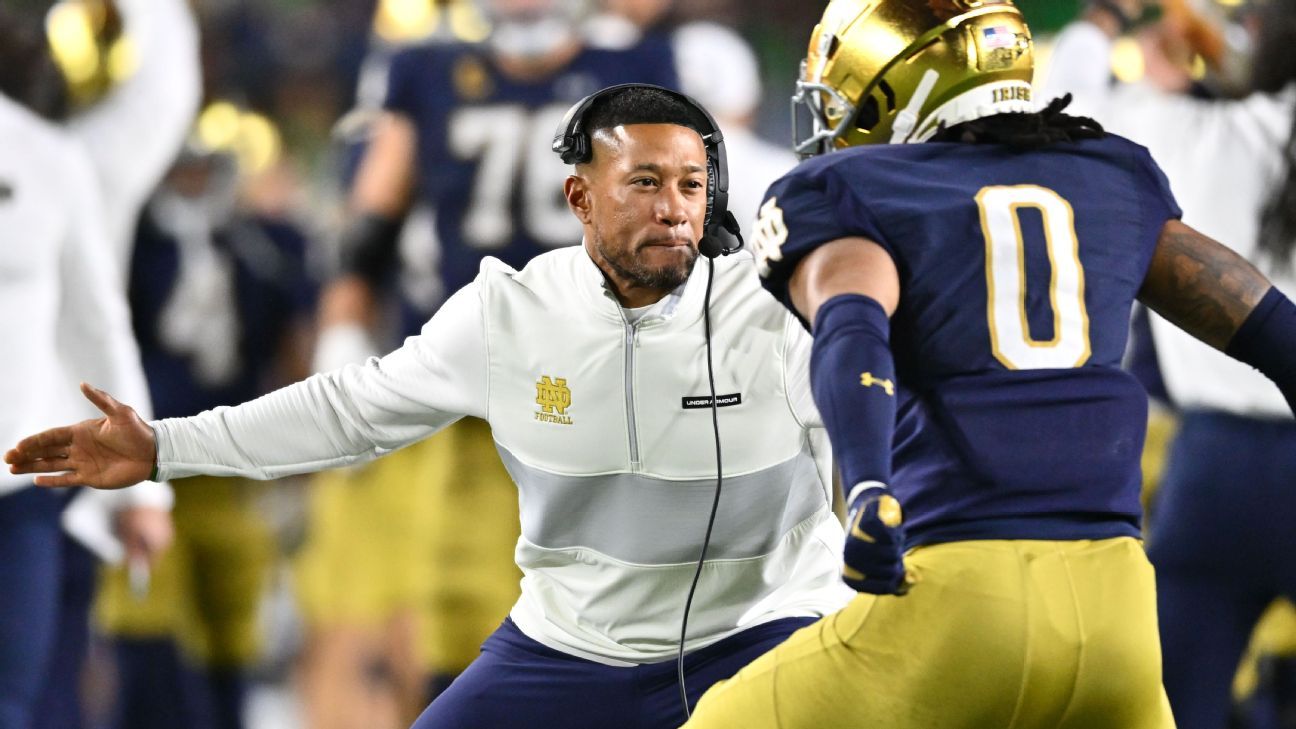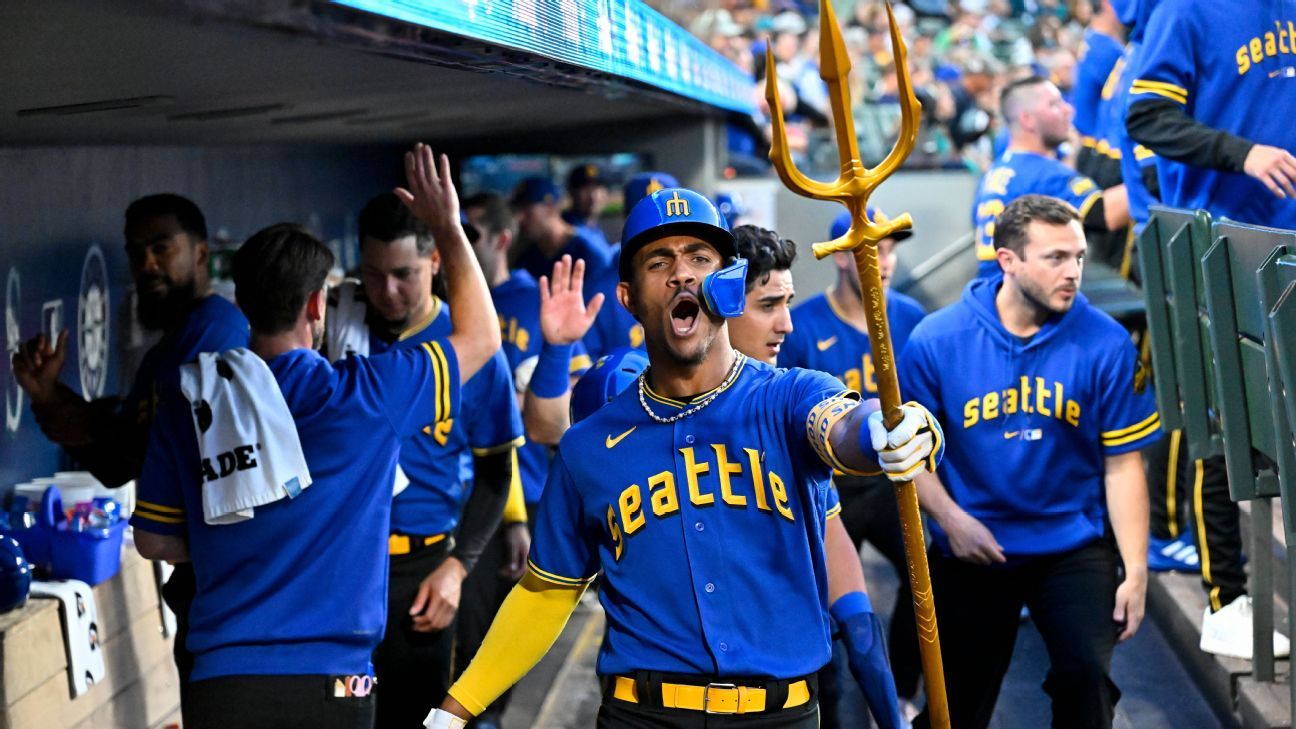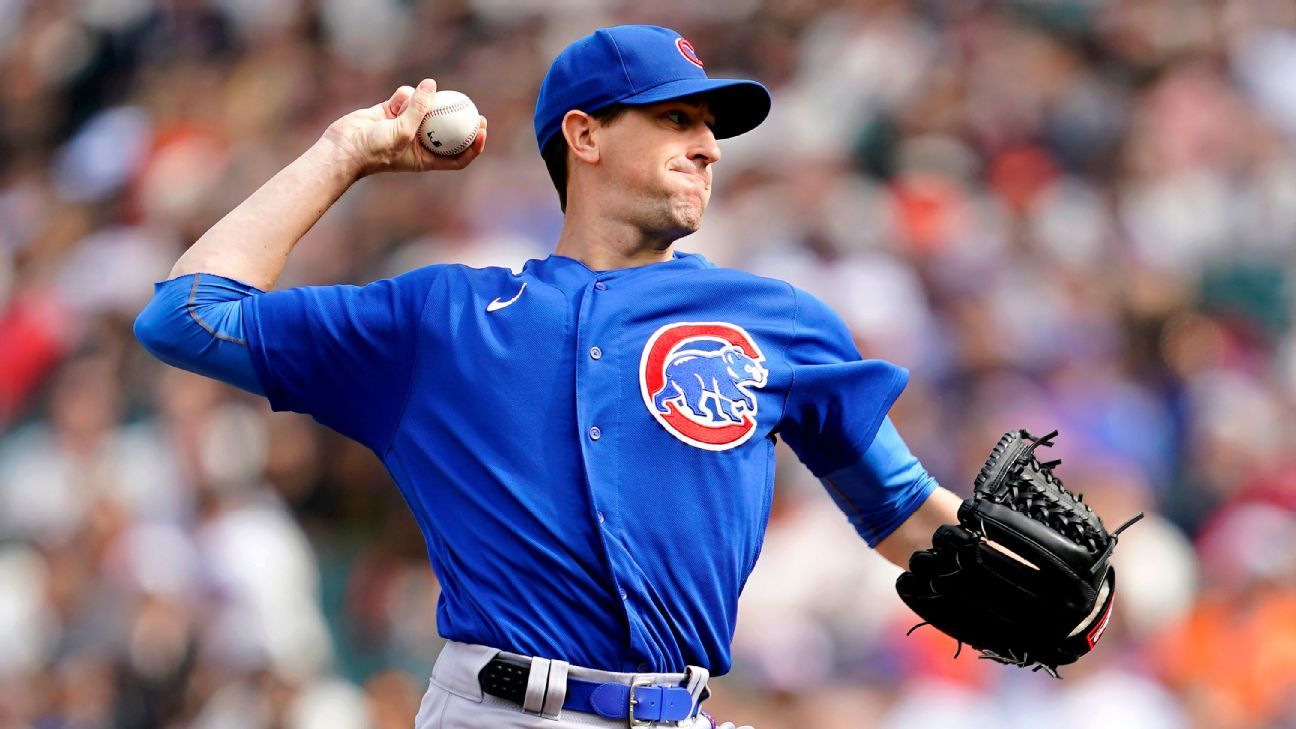With the 2022 Winter Olympics fast approaching and NHL players still on track to participate, excitement is growing for American fans.
(Not over Team USA’s new sweaters, unless Patrick Kane will be playing rugby in Beijing. But USA Hockey has answered the nagging question of what the men’s national team would look like if Mike Ditka designed the jerseys.)
The U.S. team’s goaltending depth is stronger than Canada’s. The team has forwards like Auston Matthews, which is great, although not “Canada great,” considering our friends from the North could have Connor McDavid or Nathan MacKinnon playing on their second line.
But the most fascinating part of the potential Team USA roster is the defense, because the growth of that position in this hockey nation has itself been fascinating.
The country has produced Hall of Fame defensemen like Phil Housley, Brian Leetch, Chris Chelios and Mark Howe. The current crop has the potential to yield a few more.
Here’s a look at the state of American defensemen, taking into account recent history and their starts to the season. We’ve ranked them in tiers according to our own observations and with input from those we informally polled, including Chelios, now an ESPN studio analyst.

The elite
Adam Fox, New York Rangers
Charlie McAvoy, Boston Bruins
They’re the consensus top two American-born defensemen in the NHL today. Fox, 23, has 107 points in his first 143 NHL games with the Rangers, winning the Norris Trophy last season. McAvoy, 23, is still looking for his awards breakthrough, but with 134 points in 250 games and a 200-foot game, he’s the next in the great tradition of outstanding Bruins defensemen.
The main differences between the two: Fox has been an ace on the power play, with 6.38 points per 60 minutes with the man advantage. McAvoy (4.05) is no slouch, and he finally has been given the keys to the Bruins’ power play and has excelled (7.87 this season). McAvoy also gets credit for being a stouter defender in his own zone.
“McAvoy has the best overall game. You can put him on the No. 1 power play, the penalty kill, he can play a physical game against physical players and can play the speed game against the faster players,” said one NHL veteran. “Fox is a very good player in the offensive zone. He’s a heck of a defenseman. But if he’s going against a physical player in the corners, he might not come up with that puck as often as McAvoy would.”
The divisive ones
John Carlson, Washington Capitals
Seth Jones, Chicago Blackhawks
Perhaps having a name that sounds like “Karlsson” means dominating offensively but getting dragged for defensive deficiencies. No American-born defenseman has more points (349) since 2014-15 than the 31-year-old Carlson, whose passing acumen has helped power the Capitals at even strength and on their deadly power play. But his only Norris Trophy nomination was in 2019-20, when he was the runner-up. The winner that season, Roman Josi, was seen to have a more “complete” all-around game. Despite 75 points in 69 games, Carlson couldn’t overcome that perception.
Jones, 27, has represented one of the widest gaps between the analytics community and the NHL’s “eye test” dogma for a few seasons, to the point where it’s become a study in and of itself.
“Players like Jones force us to consider the ways that flashy displays of talent do not necessarily translate to macro-level on-ice results; how a player can be really good at certain very visible things but quietly ineffective in other areas,” noted the analytics writer JFresh.
Jones is having a bounce-back campaign with the Blackhawks, after a tough start. “He likes to get up the ice and lead the play. He’s settled down quite a bit from the beginning of the year. He’s playing a lot smarter,” Chelios said.
Former Blackhawks general manager Stan Bowman committed eight years, $76 million and full no-move protection to Jones in a contract that starts next season. That salary did little to help bridge the perception gap. One NHL veteran we spoke with believed that Jones is actually a better defenseman than Adam Fox, but that his contract with the Blackhawks obscures that.
“He’s a really good defenseman, but not at $9.5 million [against the cap],” he said.
The expected Olympians
Quinn Hughes, Vancouver Canucks
Jaccob Slavin, Carolina Hurricanes
Zach Werenski, Columbus Blue Jackets
Jones has already been named to the U.S. Olympic men’s hockey team for the Beijing Games in 2022. It’s assumed that Fox and McAvoy will join him. Carlson played in Sochi and is one of the youngest of the old guard, so he’s expected to be there, too.
Three other spots could go to these three defensemen. Hughes, 22, is an instant-offense player with speed and creativity, although his defensive game is still coming along.
Chelios said he likes everything about Hughes but his size, as he’s listed at 5-foot-10. “He’s not a hard guy to play against in D-zone, but he’s great with the puck. He’s got unbelievable skill,” he said.
Slavin, 27, graduated from annual “most underrated player” lists to become one of the NHL’s most respected defensive defensemen, and the perfect complement for players like Hughes and Carlson. “He’s awesome,” said one NHL veteran of Slavin. “If you’re looking for an all-around guy you can throw out there in all situations, then Jaccob Slavin is my guy.”
Werenski has emerged from the shadow that Seth Jones cast as his partner in Columbus. The 24-year-old signed a long-term deal with the Blue Jackets, and had 13 points through 16 games for them to start the season.
Chelios pushed back on the idea that Werenski was overshadowed by Jones. “I would say the opposite. I think he’s a more complete defenseman,” he said. “I’m a big fan of him. Size, strength. He’s good in every aspect.”
The old guard
Justin Faulk, St. Louis Blues
Erik Johnson, Colorado Avalanche
Alec Martinez, Vegas Golden Knights
Ryan McDonagh, Tampa Bay Lightning
Kevin Shattenkirk, Anaheim Ducks
Ryan Suter, Dallas Stars
Keith Yandle, Philadelphia Flyers
Some of these names were synonymous with U.S.-born defensemen in the past decade, and a few are proving to have a bit more left in the tank.
Suter (36), Johnson (33), McDonagh (32) and Shattenkirk (32) are all previous Olympians. Of the four, Shattenkirk has arguably had the best 2021-22 season, with 14 points in 19 games with the surprising Ducks. Martinez, 34, has gained newfound respect since joining the Golden Knights, after being an overlooked performer with the Kings. Yandle, 35, isn’t the offensive powerhouse he once was, but is closing in on Doug Jarvis’ NHL ironman streak record (964 games), having played in 939 straight as of Wednesday.
Faulk is the youngest of the “old guard” at 29 years old. It only seems like he’s been around forever because he started with the Hurricanes as a 19-year-old rookie in 2011. He has been the embodiment of “solid but unspectacular” for St. Louis.
The regression squad
Jakob Chychrun, Arizona Coyotes
Matt Grzelcyk, Boston Bruins
Jeff Petry, Montreal Canadiens
Mike Reilly, Boston Bruins
Brady Skjei, Carolina Hurricanes
Chychrun, 23, has dual citizenship and has represented Canada internationally but was born in Florida. With four points in his past five games, he’s starting to pick up the pace offensively, but he has a long way to go: A player who quietly built a Norris Trophy case last season started this campaign with five points in 19 games, potentially dashing his Team Canada Olympic hopes.
Petry, 33, has suffered an even steeper decline. He had four straight seasons with at least 40 points playing for the Canadiens. This season, he tallied two points in his first 20 games, which is a big yikes.
Chelios said the absence of Carey Price so far this season has impacted Petry. “When you’ve got a good goalie behind you, it bails you out. I’ve been in that position a lot in my career. But I still like [Petry] a lot,” he said.
Grzelcyk, 27, has struggled to fulfill the promise of his potential. Grzelcyk had two points in his first 15 games this season after posting 20 points in 37 games last season. A decrease in power-play time can carry some of that blame.
Skjei, 27, has four points in 17 games, but some of his underlying numbers are both underwhelming relative to his teammates and continue a two-year dive into below-average play.
Reilly, 28, went from being one of the best-kept secrets in the league with Montreal and Ottawa to a solid contributor for the Bruins last season, who kicked him a new three-year deal in the offseason. But it hasn’t been the best start for him, as the Bruins made him a healthy scratch on a couple of occasions. After being one of the better defensemen in puck retrieval for them, “he’s leaving some of that dirty work to his partner too often when it’s his turn,” said coach Bruce Cassidy.
The resurgent squad
Shayne Gostisbehere, Arizona Coyotes
Cam Fowler, Anaheim Ducks
Noah Hanifin, Calgary Flames
Nick Jensen, Washington Capitals
John Marino, Pittsburgh Penguins
Torey Krug, St. Louis Blues
Nate Schmidt, Winnipeg Jets
It took a season, but Krug looks like Krug again. Leaving Boston to ostensibly replace Alex Pietrangelo in St. Louis was a tough transition, but he’s playing improved defense and is on his way to generating a great portion of points on the power play, where he was extremely effective in Boston.
Fowler, 29, is off to a great start offensively (13 points in 19 games) after a couple of middling scoring campaigns for the Ducks.
Marino, 24, has been unable to build on an outstanding rookie season (2019-20), but he has shown signs early this season that he might be bouncing back from his sophomore slump. Hanifin, 24, has also rebounded from a couple of rough campaigns, with better possession numbers under coach Darryl Sutter, which is to be expected. He’s got something good going with partner Rasmus Andersson.
A couple of players just needed new addresses. Schmidt, 30, has wiped off the stink from his ill-fated stint with the Vancouver Canucks and has helped steady the game of Josh Morrissey in Winnipeg. And how about that Ghost Bear with the Coyotes, huh? Gostisbehere is currently posting his highest points-per-60 minutes average (2.1) since the 2017-18 season with the Flyers.
Jensen, meanwhile, has seen his ice time jump by nearly two minutes with the Capitals as Dmitry Orlov‘s primary partner. The 31-year-old is fourth in the league among defensemen at 5.5 goals scored above average.
The underrated
Brandon Carlo, Boston Bruins
Nick Leddy, Detroit Red Wings
Ryan Lindgren, New York Rangers
Brett Pesce, Carolina Hurricanes
Neal Pionk, Winnipeg Jets
With Slavin having graduated off the “underrated” list, he has symbolically passed the torch to his teammate Pesce. The 27-year-old can contribute offensively and play steady on defense, and has been mentioned as being on a long list for the Olympics.
Pionk, 26, plays a solid blue-collar game for the Jets. He had breakout offensive seasons from 2019-20 to 2020-21, yet still hasn’t landed on many radar screens as a Winnipeg defenseman. But his underlying numbers are strong and he can play in all phases of the game.
The Islanders could certainly still use Leddy, who was a steadying regular-season presence for them since 2015. But the salary cap dictated his move to the Red Wings, where he has been a good veteran partner to Filip Hronek and Moritz Seider this season.
Lindgren, 24, has been one of the secrets to Adam Fox‘s success in the NHL, pairing perfectly with the Norris winner. He’s solid in his defensive role and not a bad skater himself, either.
The unbalanced
Tony DeAngelo, Carolina Hurricanes
Connor Murphy, Chicago Blackhawks
Jacob Trouba, New York Rangers
All three of these players cannot claim to have great all-around games, even if they have some great facets to their games.
Trouba, 27, was an average defenseman with some outstanding offensive potential with the Jets. In his two previous seasons with the Rangers, he didn’t fulfill that potential offensively. His underlying numbers are promising at the start of this season, and he had seven points through his first 18 games.
Murphy has contributed offensively here and there, despite being a defensive defenseman. But that’s dried up so far: 0.3 points per 60 minutes through 19 games this season. Then again, it hasn’t exactly been the best ride for him overall with a 35.8% Corsi for percentage.
DeAngelo, whom the Rangers infamously let go last season, has reminded everyone why he was sought after despite his reputation: 16 points in 17 games with the Hurricanes, with six of them coming on the power play. They brought him in to help fill the offensive hole left by Dougie Hamilton, and fill it he has. But he remains a player whose offensive prowess can help obscure his shortcomings.
The next ones
Mikey Anderson, Los Angeles Kings
Luke Hughes, New Jersey Devils
K’Andre Miller, New York Rangers
Scott Perunovich, St. Louis Blues
Jake Sanderson, Ottawa Senators
The next class of American defensemen features some who have already made the show — Anderson (22), Miller (21) and Perunovich (23), who was just called up by the Blues — and a couple of recent draftees in Sanderson and Hughes.
The past was solid. The present is outstanding. With these players, and the young stars who are still improving, the future is bright for U.S.-born defensemen.

Three things about jerseys
1. Jersey Devils
Rooted in Garden State hockey history. Forged for the future. #NJDevils | #MadeInJersey pic.twitter.com/5qj1eE8X7A
— New Jersey Devils (@NJDevils) November 23, 2021
I grew up a New Jersey Devils fan. I understand the initial disappointment fans had from seeing their all-black third jerseys, because they were radically different than the ones we’d all imagined since the team switched its color palette three decades ago. There wasn’t a radical reimagining of the logo or a menacing visage of a devil on the front. It’s a jersey that has “JERSEY” on the front of it and more white stripes than an alt-rock station’s 2003 playlist.
When something doesn’t match what the mind’s eye sees, disenchantment sets in, and the dunk party begins. Fun as it’s been, I can’t join the party, because (shrug) I like them. Sure, I could use fewer stripes and some sort of logo — either a Devils insignia or a silhouette of the state — near the wordmark on the front. But I like them for their boldness. I like that’s a little street art adjacent. And I like that for millions of us who say “we’re from Jersey” when asked about our geographic lineage, the only major pro team with the state’s name in its moniker wears that with pride.
Now, go make the hat that says “HAT,” will ya, Devils?
2. Team USA
— USA Hockey (@usahockey) November 24, 2021
There’s so much wrong with these national team jerseys that it’s hard to know where to start, so I’ll focus on the absurdity of that third jersey, aka a second blue jersey.
From the ad copy: “Drawing inspiration from American ‘muscle cars’ and traditionally bold hockey designs, Team USA’s alternate jersey bears a deep blue double stripe running around the chest and arms.” Finally, a hockey sweater for Jay Leno!
Inside the collar is the message “Driven By Pride,” a statement meant to inspire our athletes to win for their nation … or buy a BMW, which made that slogan its ad campaign in 2020.
3. Team Canada
The 🍁 is ready for another iconic moment 🤩
Here are the hockey jerseys that #TeamCanada will be wearing as they compete for Olympic 🥇 at Beijing 2022 ➡️ https://t.co/Job1bxn4v2
📸: Hockey Canada pic.twitter.com/hJO2gB5vGZ
— Team Canada (@TeamCanada) November 24, 2021
I have no idea what Canada was thinking with this logo, because the maple leaf on the front of its national team’s jerseys looks like the backside of a turkey. I hate that I’m the one that had to point this out, because it makes it absolutely impossible for you to see anything but the posterior of a Meleagris gallopavo domesticus when you see Team Canada at the Olympics. I’m truly sorry, although not really.
Winners and losers of the week
Winner: Jared Bednar
What a pleasant surprise. Bednar, the winningest coach in Colorado Avalanche history, looked destined to take the fall if the team fell apart in the playoffs again. Another postseason dud, and general manager Joe Sakic would dump Bednar and opt for “the guy with the Stanley Cup ring” to get the Avalanche over the top. (A Claude Julien or Mike Babcock type.)
Instead, Bednar was extended through the 2023-24 season. That’s an endorsement not only of his coaching prowess, but an indication that Sakic isn’t going to overreact if Colorado can’t scale the mountain again. More on the move here from Adrian Dater.
Loser: Travis Green
Can the plummeting Vancouver Canucks finally excuse this man from the apocalypse? Green’s hands aren’t clean in this mess — at a .350 points percentage, this appears to be the fourth of his five seasons in Vancouver with a team under .500. But this version of the team’s problem is construction and not coaching, and word is that total regime change is coming. As Patrick Johnston reports, a disagreement among team owners may be preventing GM Jim Benning from doing what should have already been done.
Winner: Calgary Flames
The Flames haven’t lost in regulation in seven games (5-0-2) and shredded the Eastern Conference on a recent road trip. We figured coach Darryl Sutter was going to get this team in shape defensively, and they’re first in the league with a 1.90 goals-against average. But the Flames have a plus-30 goal differential because they’re seventh in team offense (3.40 goals per game). Hiring Sutter was a Hail Mary last season from GM Brad Treliving. Sometimes those passes connect for a score.
Loser: New York Islanders
Losing players to COVID-19 protocols and injuries, the Islanders opened UBS Arena with three straight losses — part of a seven-game losing streak overall in which they were outscored 31-7. But hey, at least there are 17 bars to take the edge off.
Winner: Connor McDavid‘s house
When your dog matches your home decor 🙌
Take a full tour of @EdmontonOilers player Connor McDavid’s ( @cmcdavid97 ) cozy, yet modern abode which was designed by his girlfriend Lauren 👉 https://t.co/8hXQLEudu3 pic.twitter.com/vftBioS4m2
— Architectural Digest (@ArchDigest) November 23, 2021
Here’s the problem with Connor McDavid’s house: perception. Architectural Digest used the word “cozy” in its description, which is like describing McDavid’s skating as “plodding.” This is not a warm sweater of a house. This is an ostentatious luxury hotel with a dog. And that’s OK! It’s gorgeously designed and a stunner. You do you, Connor and Lauren.
Loser: The discourse on the discourse
For years, I’ve been told that NHL players who say controversial things shouldn’t get goofed on by fans, because they’ll run away like scared little bunnies and never say anything interesting again. Now I’m hearing “don’t goof on a player’s Architectural Digest spread or else they won’t show us their houses anymore.”
If players require 100% approval ratings to do and say things, we might as well ban booing at games. Or, you know, assume they understand what comes with the territory as a famous person in professional sports, which is a depository for our hyperbolic reactions and emotions.
Puck Headlines
From your friends at ESPN
Neil Paine tries to figure out what the Seattle Kraken are and what they could be this season.











